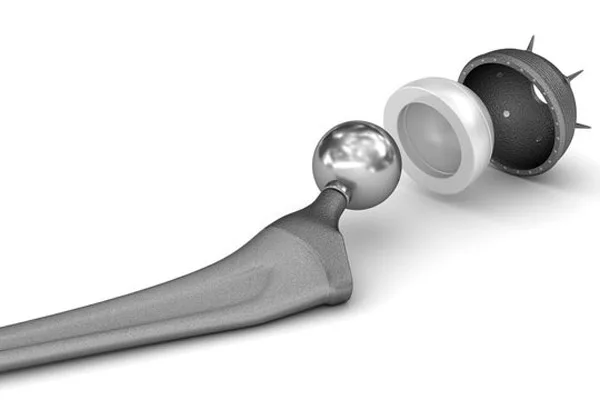Low volume manufacturing is not just a niche in the medical field; It is a cornerstone of modern healthcare innovation and patient-specific care. The unique demands of the industry – stringent regulations, demand for customization, and high-value, complex components – make low-volume manufacturing an ideal and often essential solution.
Here is a detailed look at the applications, processes, and drivers of low volume manufacturing in medical applications.
Why is Low Volume Manufacturing So Critical in Medicine?
Regulatory Pathways: Before a device can be mass-produced, it must go through rigorous clinical trials and regulatory approval (FDA, CE). Low volume manufacturing is perfect for producing the devices needed for these trials.
Mass Customization: The ultimate trend in healthcare is personalized medicine. Low-volume manufacturing enables the economic production of devices tailored to the anatomy of individual patients.
High complexity & value: Medical devices are often geometrically complex and made from expensive, biocompatible materials.
Key Applications of Low Volume Manufacturing in the Medical Field
1. Surgical Guides & Instrumentation
This is one of the most widespread and impactful applications.
What it is: 3D-printed or CNC-machured guides that are custom-designed from a patient’s CT or MRI scan. They fit directly onto the patient’s anatomy during surgery.
Examples:
- Dental Implant Guides: Ensure implants are placed with perfect position, angle, and depth.
- Orthopedic Guides: Used in knee, hip, and spinal surgeries to guide bone cuts and drill holes with sub-millimeter accuracy.
- Craniomaxillofacial (CMF) Guides: Assist in complex reconstructive surgeries of the skull and face.
- Low Volume Manufacturing Process: Primarily 3D Printing using biocompatible, sterilizable resins. This is the epitome of patient-specific, low-volume production.
2. Implants & Prosthetics
Low volume manufacturing is revolutionizing the creation of permanent medical devices.
What it is: Manufacturing implants that are tailored to a patient’s unique anatomy, leading to better outcomes and faster healing.
Examples:
- Patient-Specific Implants (PSIs): Titanium skull plates, spinal cages, or hip acetabular cups with porous surfaces that promote bone ingrowth. These are often 3D printed.
- Custom Prosthetics: Lightweight, perfectly fitting prosthetic limbs or sockets, often with custom aesthetics.
- Low Volume manufacturing Process: Metal 3D Printing is dominant for complex implants, while CNC Machining is used for high-strength, less complex designs.
3. Diagnostic & Drug Delivery Devices
The devices used for testing and treatment often start out as low-volume products.
What it is: Housings, components, and prototypes for medical equipment.
Examples:
- Prototypes for FDA Testing: Functional models of an inhaler, an auto-injector, or a blood glucose monitor used for design validation and human factors testing.
- Lab-on-a-Chip & Microfluidics: Complex, small-scale cartridges for diagnostic testing. Injection Molding with 3D Printed Molds is common here for low volumes.
- Specialized Surgical Handles & Tools: Ergonomically designed tools for specific procedures.
Low Volume Manufacturing Processes: CNC Machining for high-precision metal parts, Urethane Casting for small batches of plastic housings, and Rapid Tooling for initial production runs.

3D hip acetabular cups
Key Low Volume Manufacturing Processes in Medicine
|
Process |
Medical Application Strengths |
Key Considerations |
| 3D Printing | Surgical Guides, anatomical models, custom prosthetics. | Fast, cost-effective for complexity, wide range of biocompatible materials. |
| Metal 3D Printing | Patient-Specific Implants, surgical instruments. | Creates complex geometries impossible with other methods. |
| CNC Machining | High-Strength Implants, precision instrument components, prototypes. | Excellent for solid, high-load parts. Wide selection of implant-grade metals and plastics. |
| Urethane Casting | Soft-Touch Prototypes, silicone-like parts, small batches of housings. | Good for simulating overmolded plastics and flexible materials without expensive tooling. |
Critical Role of Regulations and Materials.
Quality Systems
Low Volume Manufacturing for medical devices must be performed under a Quality Management System (QMS) like ISO 13485. This ensures that each part is traceable and manufactured according to strict, documented procedures.
Biocompatibility
Any material that comes into contact with a patient must be tested and proven to be biocompatible under standards such as ISO 10993.
Validation
The entire manufacturing process, from file preparation to post-processing, must be validated to ensure that it consistently produces a safe and effective device.
Conclusion
In medical applications, low-volume manufacturing is much more than just a way to make a few parts. It is the enabling technology for personalized healthcare, allowing safer, more accurate, and more effective treatments. It reduces risk in the research and development process and ensures that future medical devices can be brought to patients faster and tailored to their specific needs.
